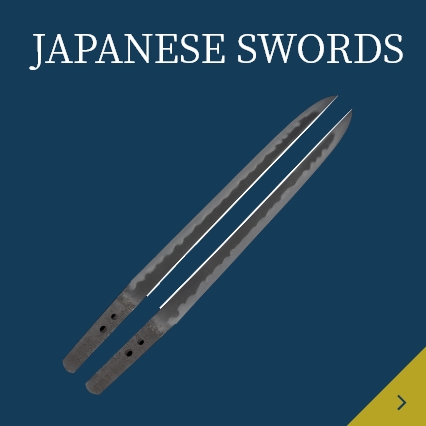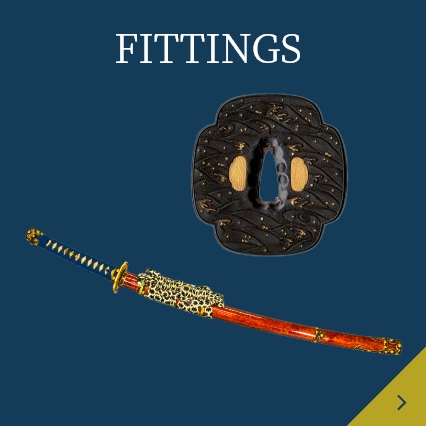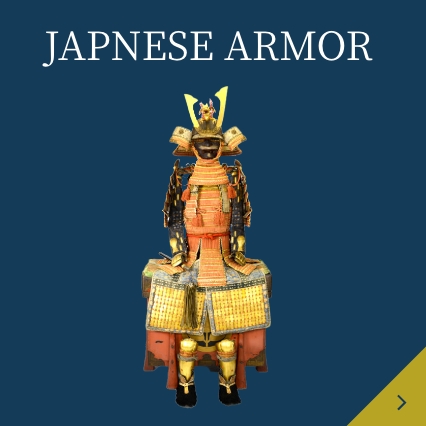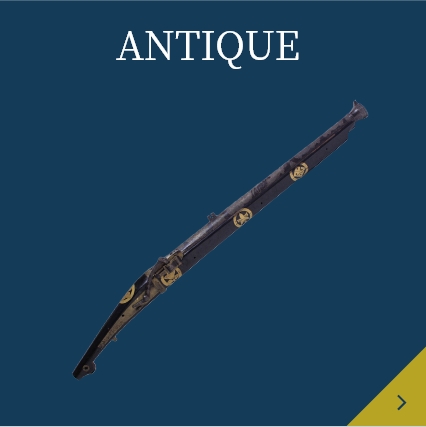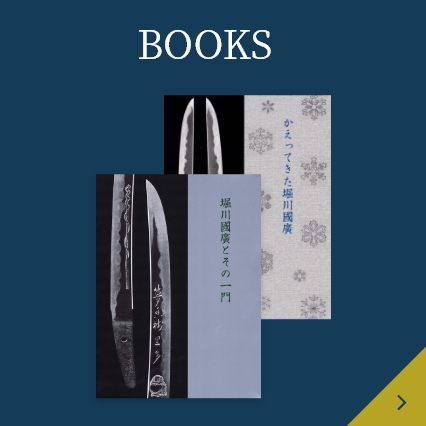Katana
Bizen Osahune Chogi
fittings:Shu ishimejinuri-gawa uchigatanakoshirae
Kozuka・Kogai Sin Kumagaya-Yoshiyuki(Kao)
古刀最上作 大業物
刀 無銘 伝長義
朱石目地塗鞘打刀拵
小柄・笄 銘 熊谷義之(花押)
| Item NO. | No,K00255 | Price | Please feel free to contact us. Reserved |
|---|---|---|---|
| Paper | Katana:NBTHK Jyuyo Paper No.52 Koshirae:NBTHK Hozon Paper | ||
| Country | Bizen | ||
| Period | Nanbokucho period(南北朝時代)14th century | ||
| Blade Length | 66.3cm(2尺1寸8分) | ||
| Curve(Sori) | 1.6cm | ||
| Top Width (Sakihaba) | 3.05cm | ||
| Bottom Width (Motohaba) | 3.05cm | ||
| Bottom Thickness (Motokasane) | 0.6cm | ||
| Top Thickness (Sakikasane) | 0.4cm | ||
| Keijo | Shinogi-zukuri, iorimune, mihaba hiroku, motosaki no habasa hotondo medatazu, sori asaku tsuki, ōkissaki ichidan to nobiru. | ||
| Kitae | Ko-itame-hada sōjite tsumi, ji-nie mijin ni tsuki, chikei komaka ni iri, shinogi-yori ni awaku utsurikai tachi. | ||
| Hamon | Yaki takaku, chōji ni gunome, togari-gokoro no ha, yahazu-fū no ha nado tashu no ha ga majiri, deiri o mite henka ga ari, ashi ha yoku iri, nioi shuchō ni ko-nie tsuki, sunagashi, kinsuji kakari, zuisho ni yubashiri ya tobiyaki majiru. | ||
| Boushi | Yaki fukaku, midarekomi, saki togari-gokoro ni komaru ni kaeru. | ||
| Hori | Omote ni nisujihi, ura ni yokote shita yori bōhi o tomo ni kaki-nagasu. | ||
| Nakago | Ō-suriage, sakikiri, yasurime katte-sagari, Hole 3 | ||
| Accessories | Kin-kise nijū habaki, shu ishime-ji nuri saya uchigatana koshirae, shirasaya. | ||
| Details | Chōgi was a swordsmith of the Nanbokuchō period, counted among the many Bizen smiths known as the Sōden-Bizen group, and he is regarded, alongside Kanemitsu, as one of the foremost masters of the school. The dated examples of his works range from the Jōwa era (1345–1350) to the Kōryaku era (1379–1381). His style shows two distinct tendencies: one leaning toward a nioi-dominant temper, and the other displaying a strong nie presence in both ji and ha. In the latter case, the influence of the Sōshū tradition is emphasized even more strongly than in Kanemitsu’s works, leading to the long-standing description: “Among Bizen swords, the smith most removed from the Bizen style is Chōgi.” His hamon is often strikingly individual, with bold undulations and varied activities. The forging typically shows itame hada, with abundant ji-nie and fine chikei running throughout. This particular blade has a wide mihaba and an impressively large ō-kissaki, giving the overall form a sense of power. The hamon displays a variety of activities, the forging is skillfully executed, and the workmanship is of a highly distinguished quality. The sword is accompanied by a koshirae mounted with a vermilion ishime-ji lacquered scabbard (shu ishime-ji nuri saya uchigatana koshirae). Kumagai Yoshiyuki, the metalworker associated with this koshirae, was active in the mid-Edo period. He was born in Sendai, Mutsu Province, and upon moving to Edo first resided in Shiba Gensukechō. While remaining in Edo, he served as a retainer artisan to the Hosokawa clan of Higo Domain and later established himself in Yotsuya. He became known as “Edo-Higo” or “Yotsuya-Higo” for his distinctive style of fittings.Koto Saijōsaku Ōwazamono. |
||

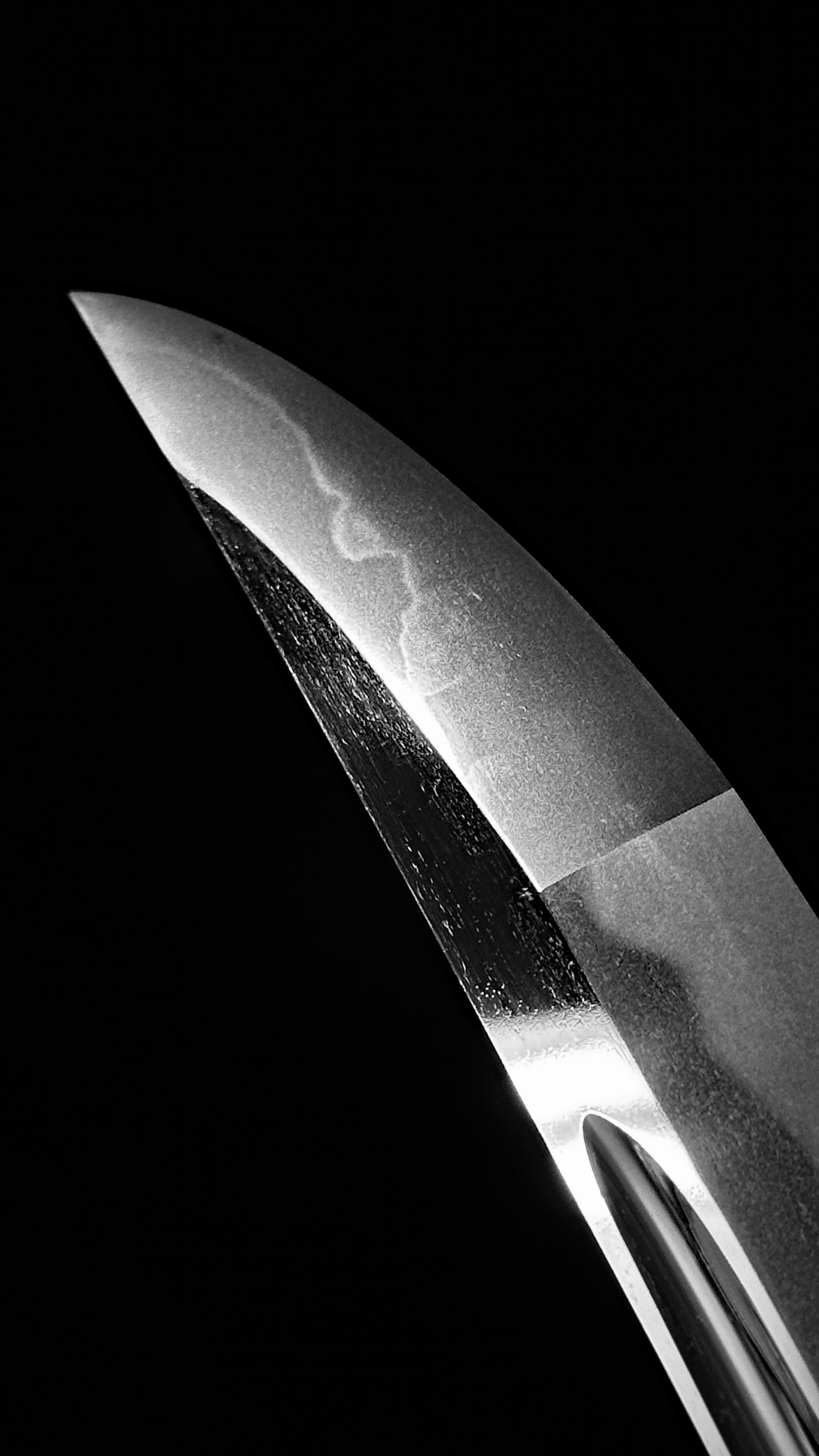
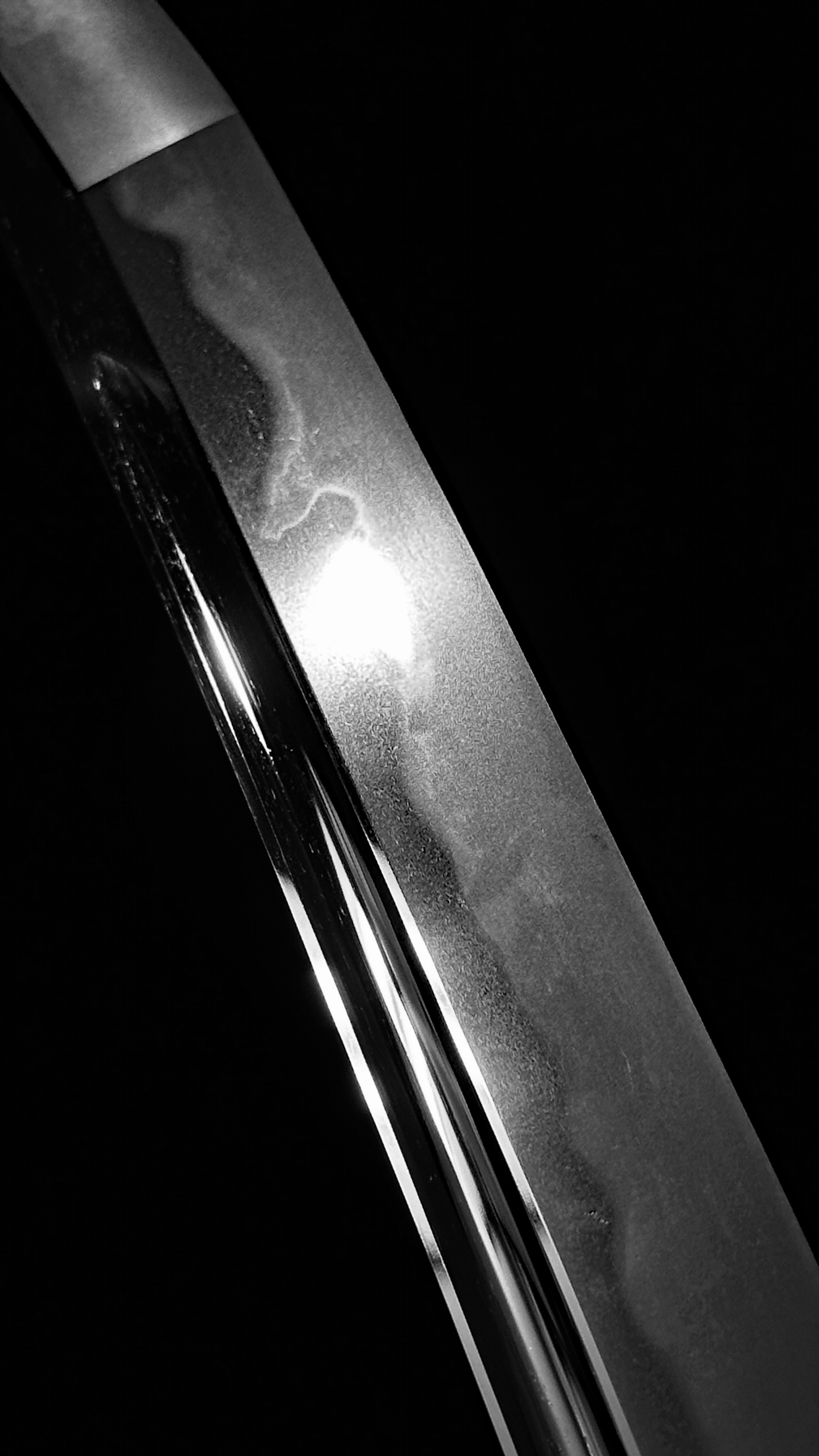
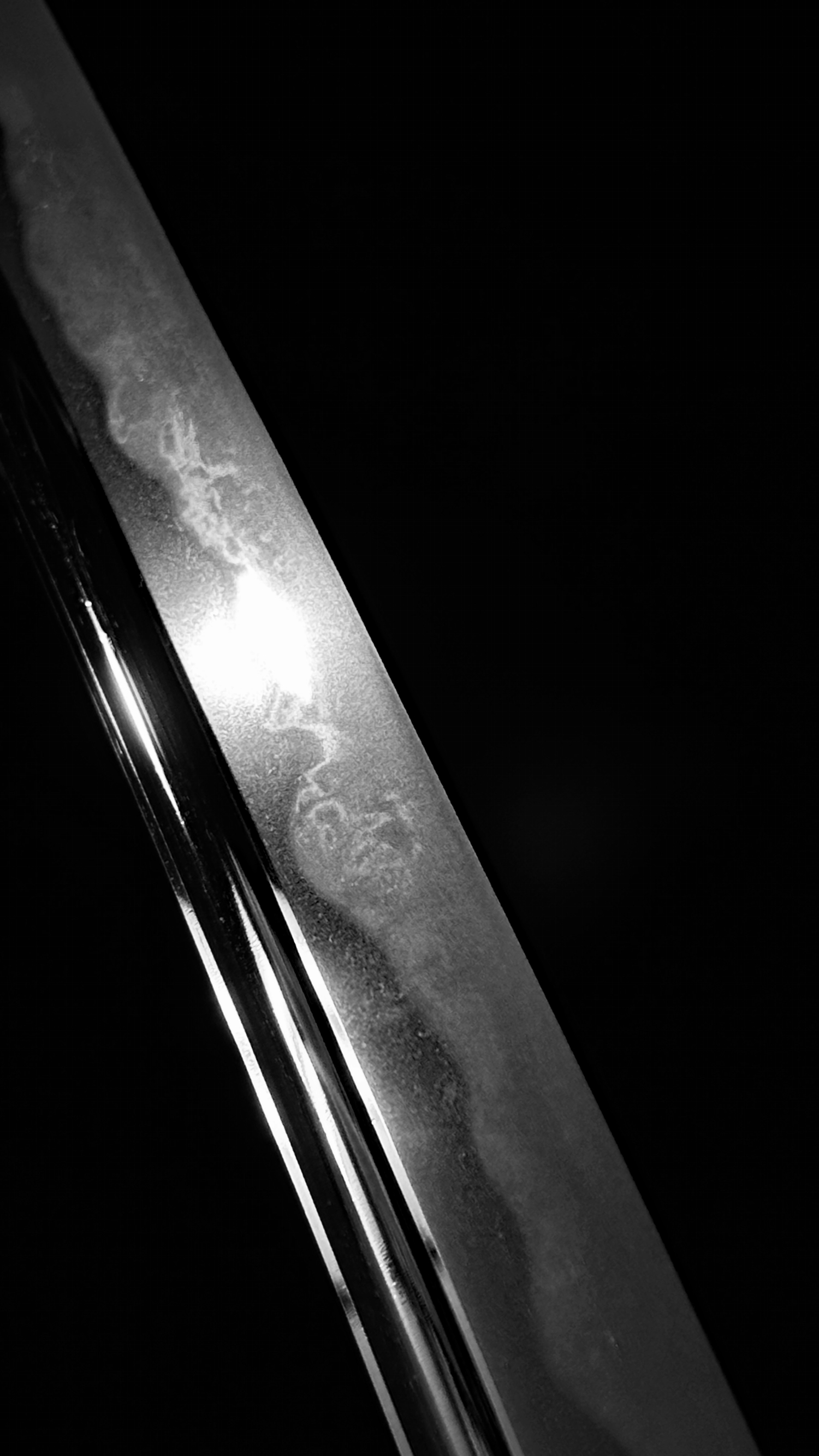
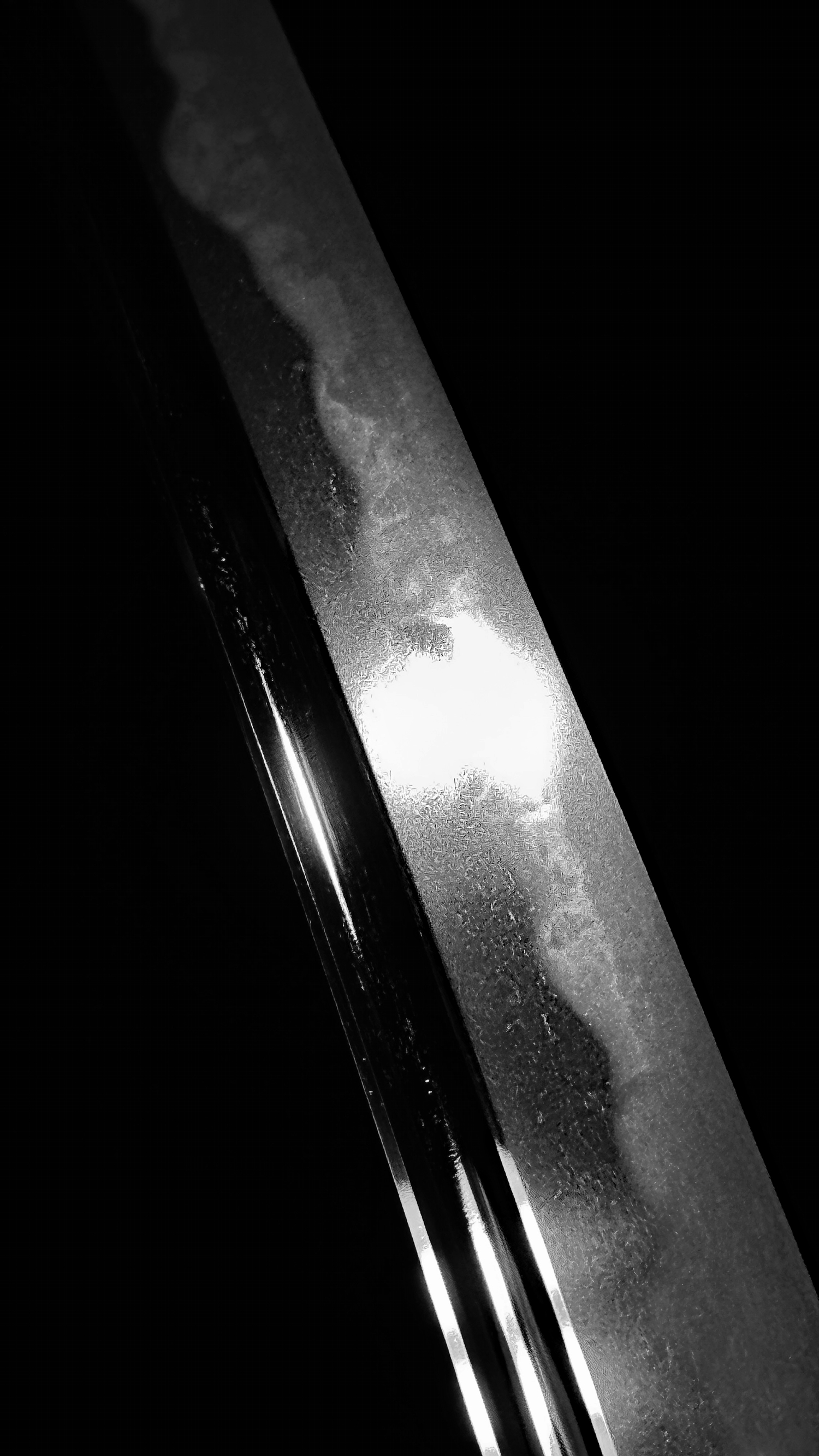
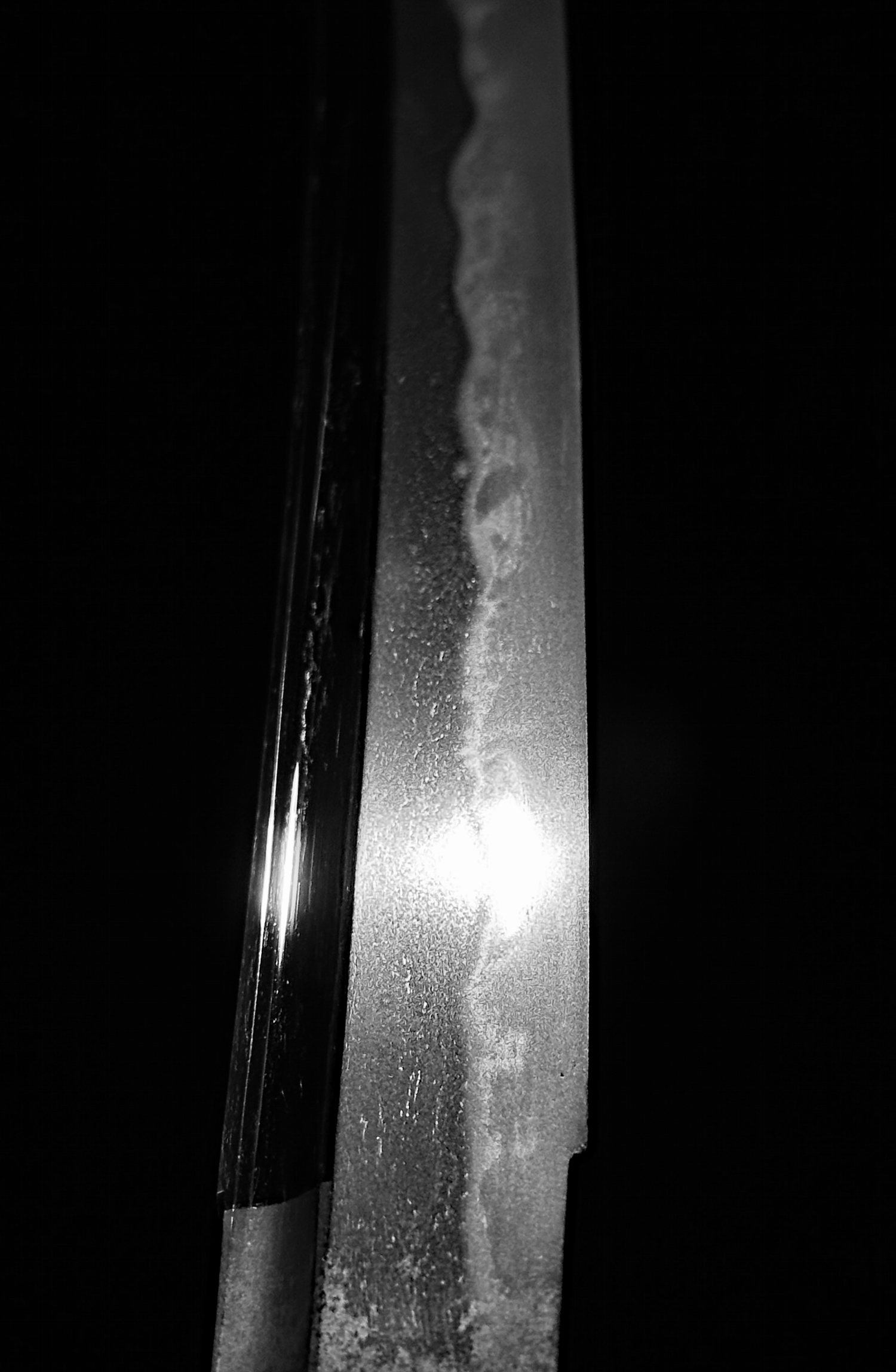
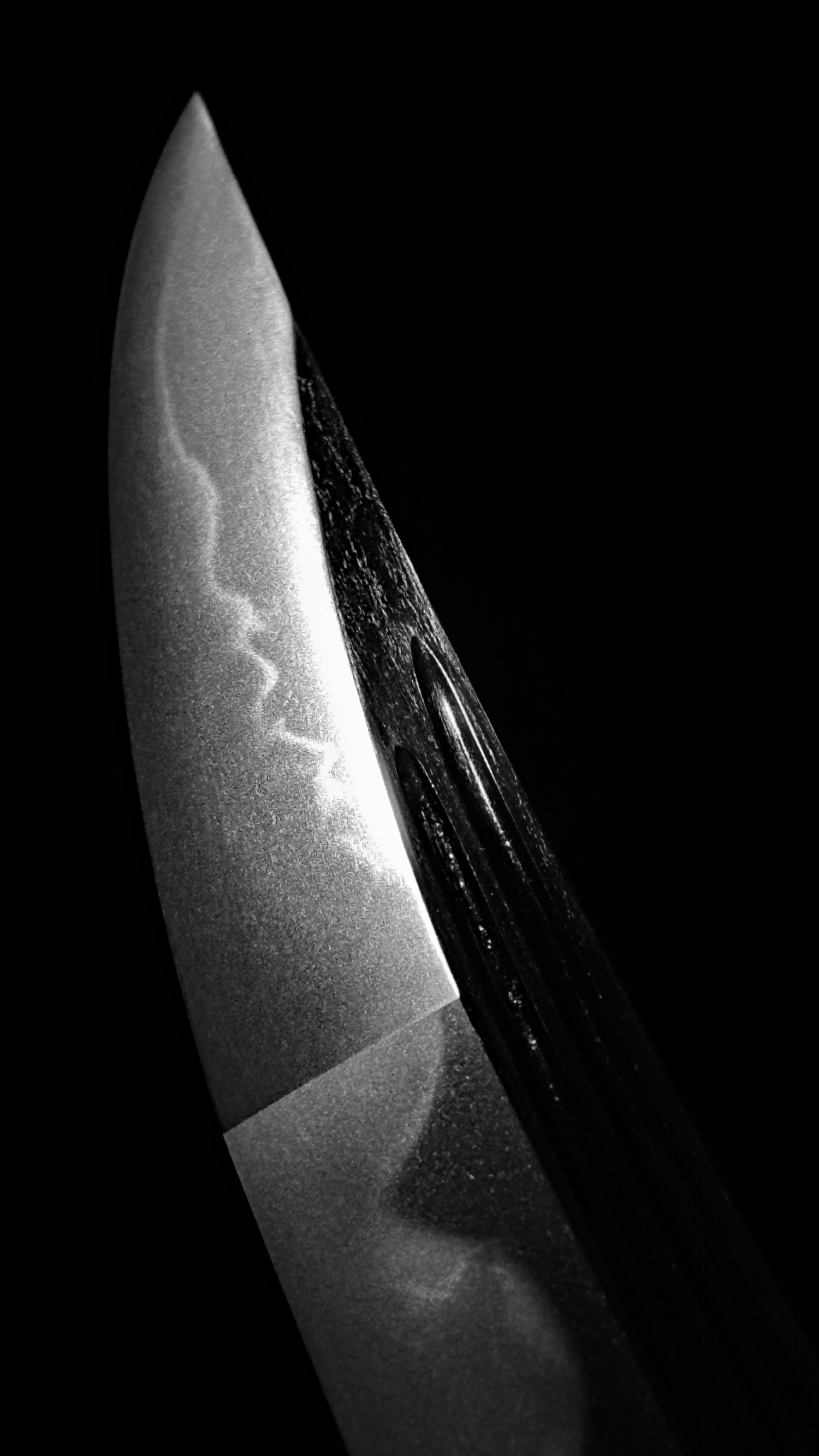
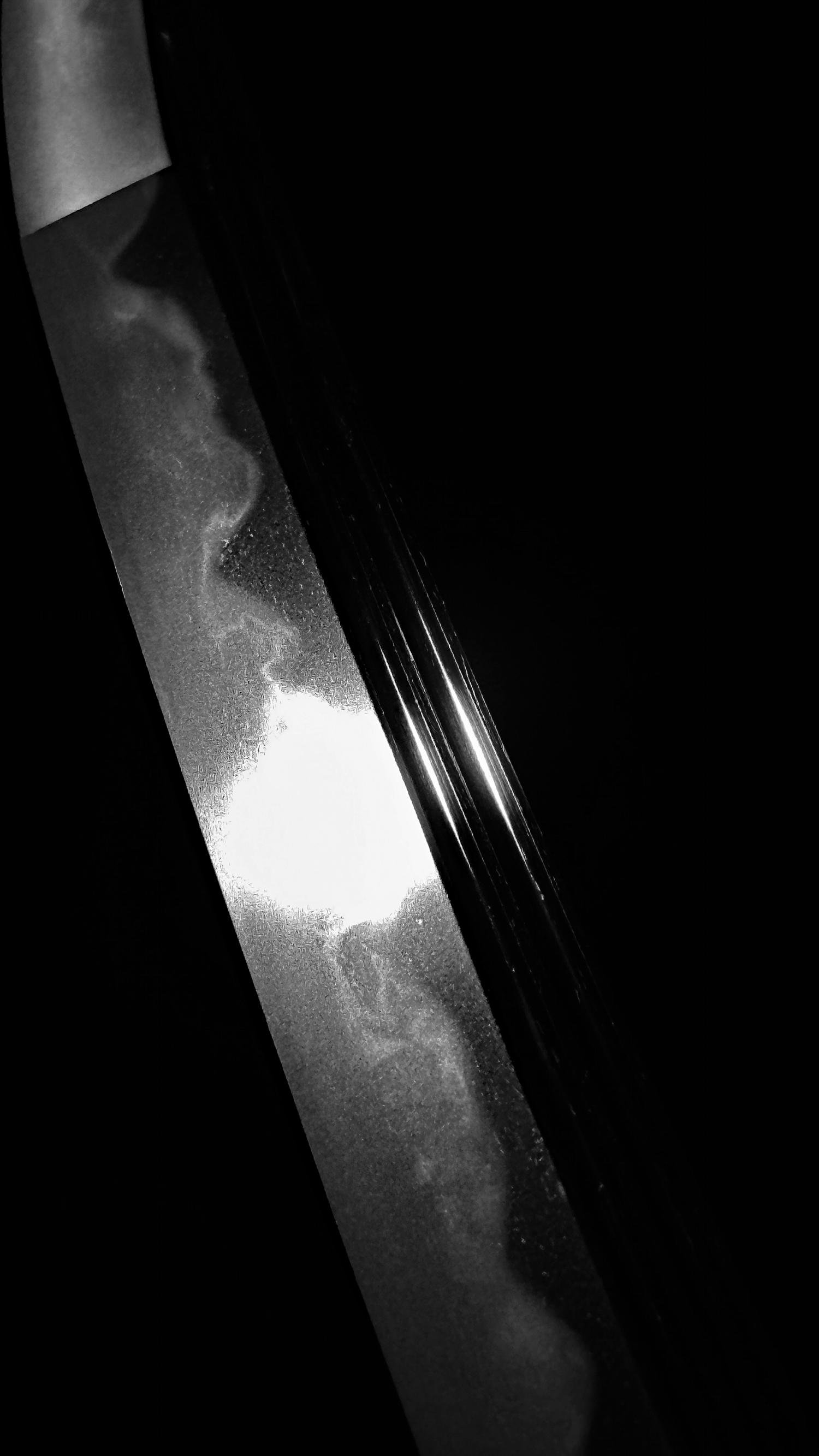
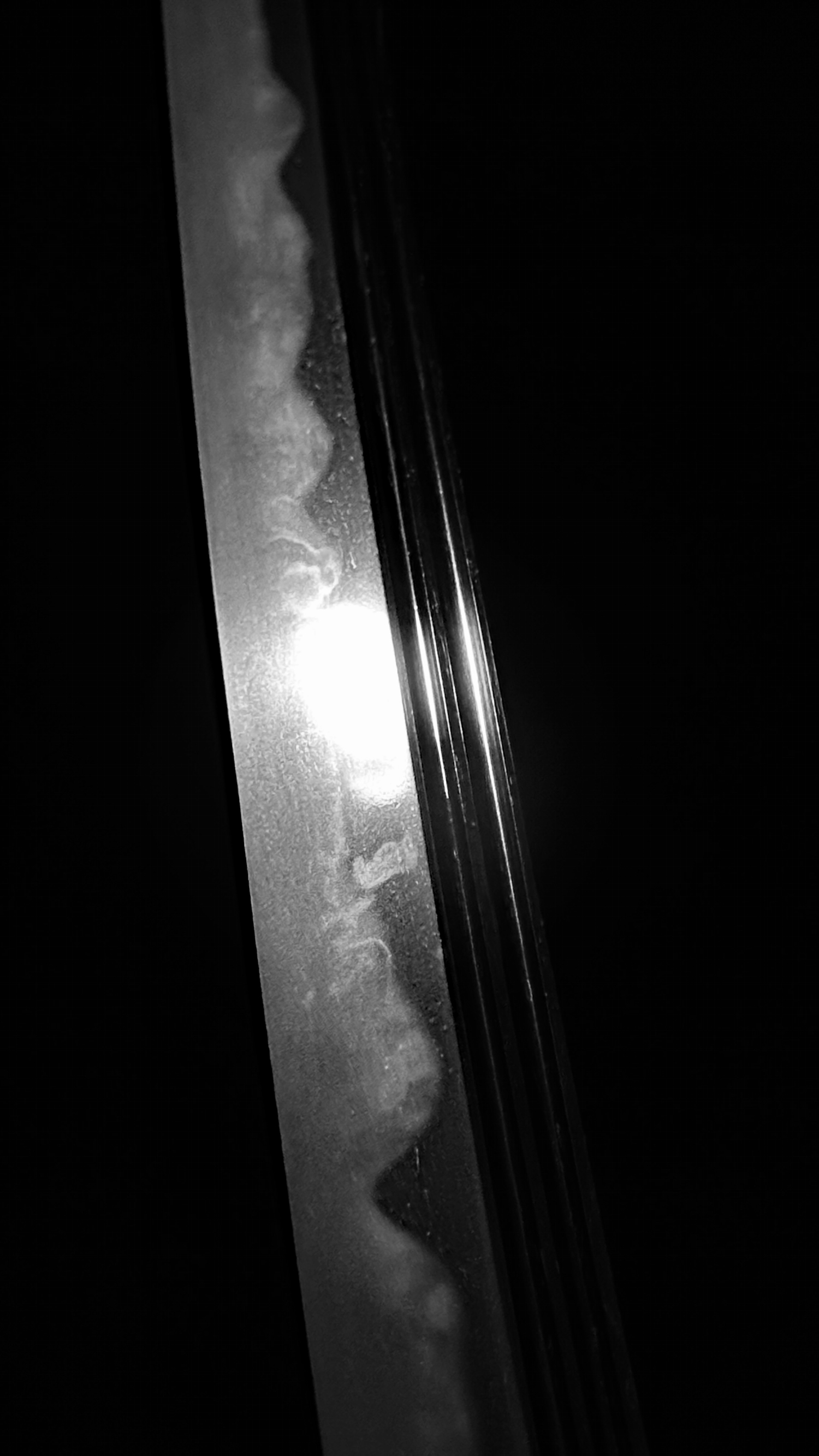
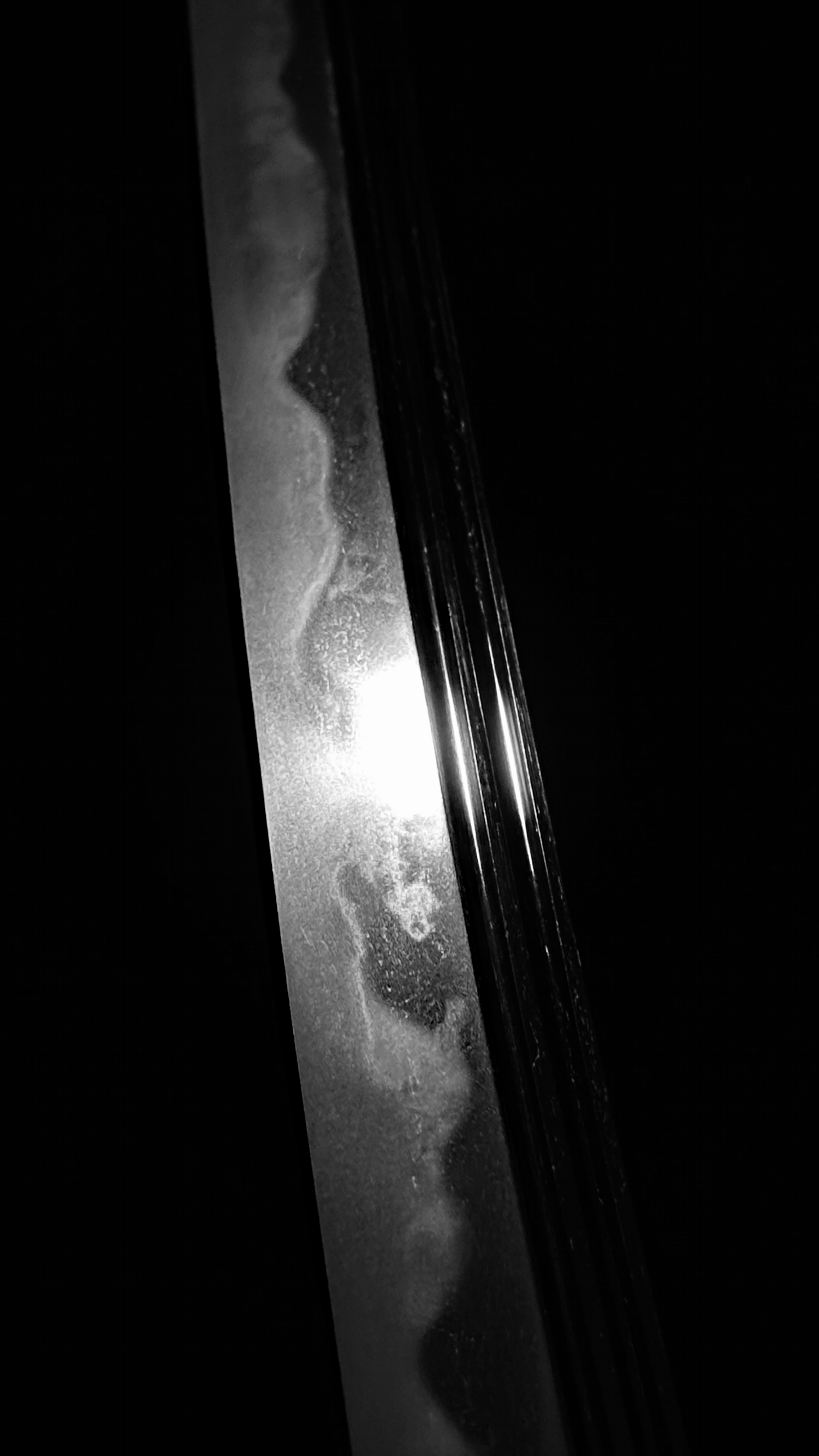
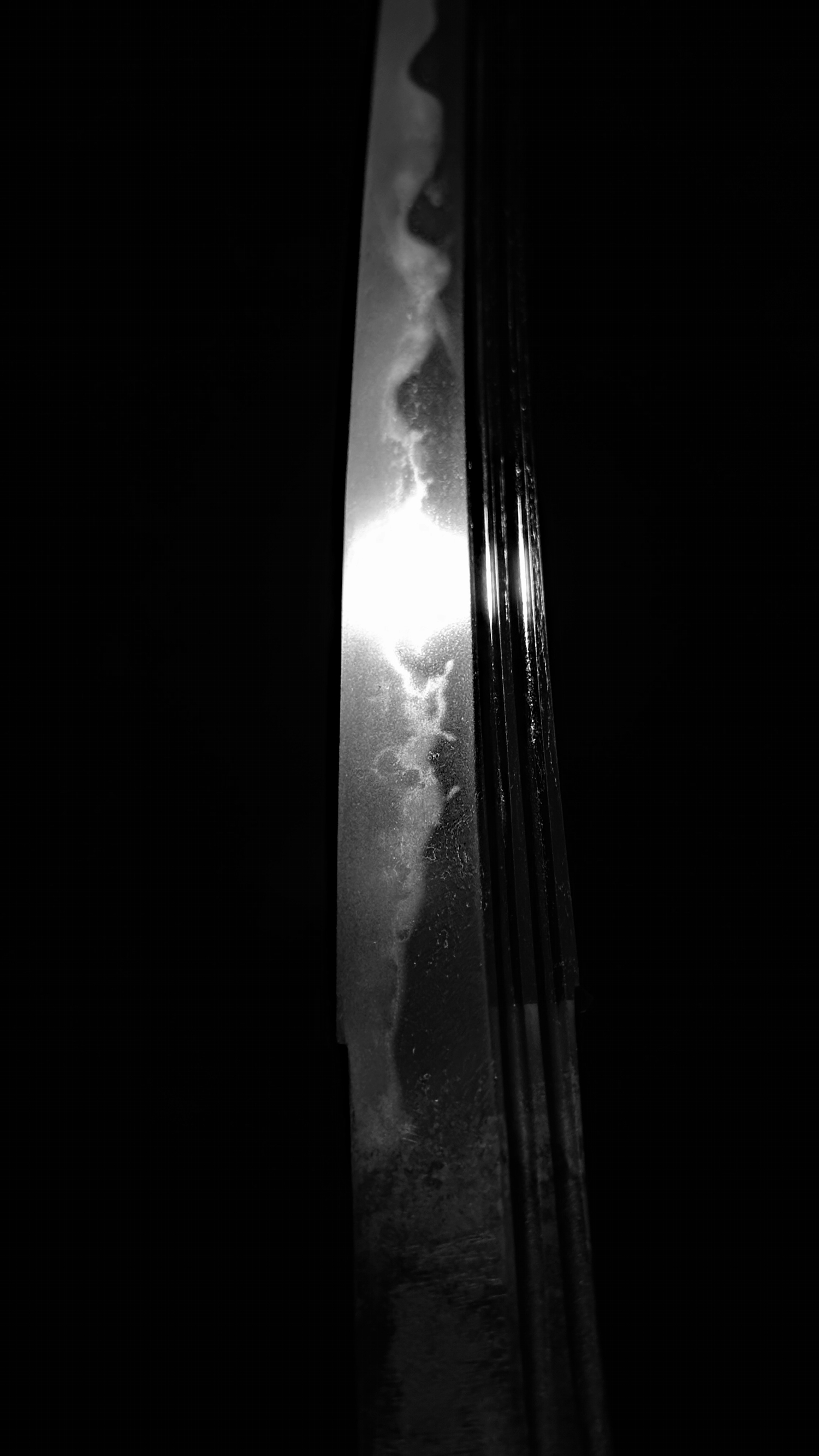


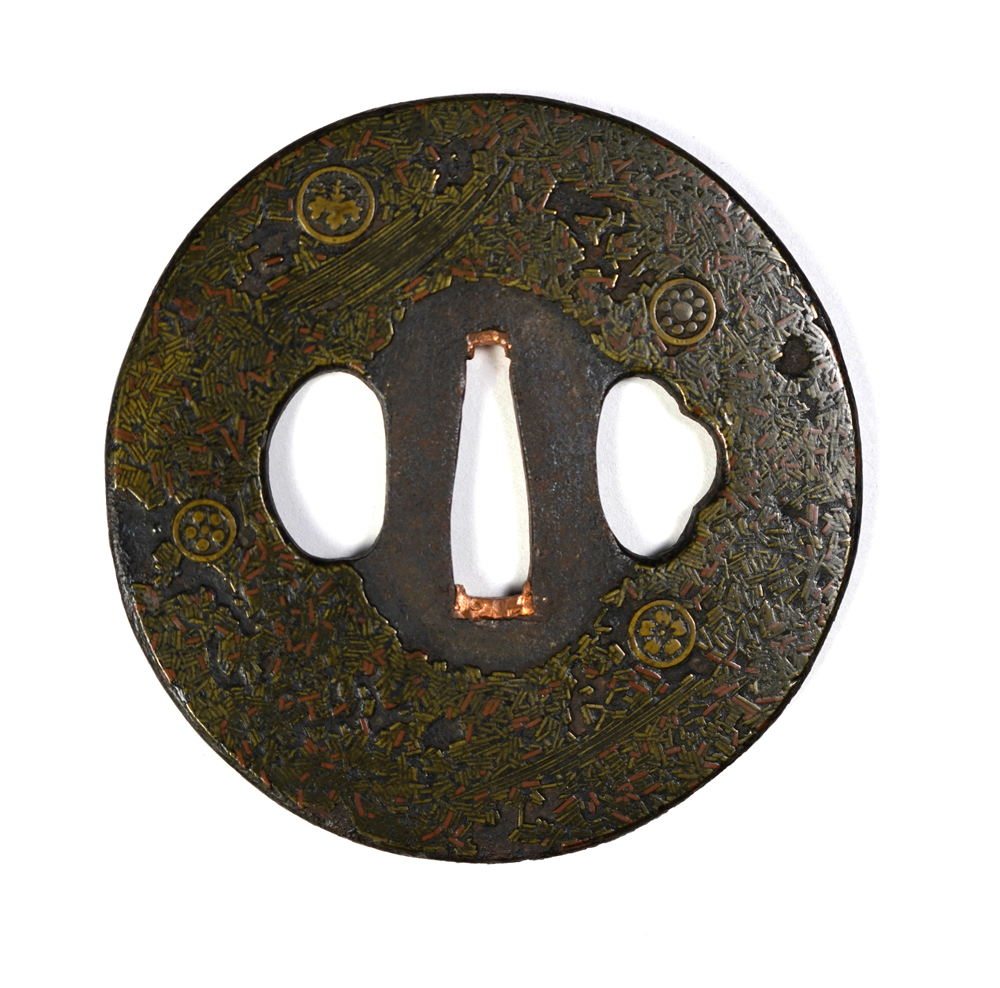
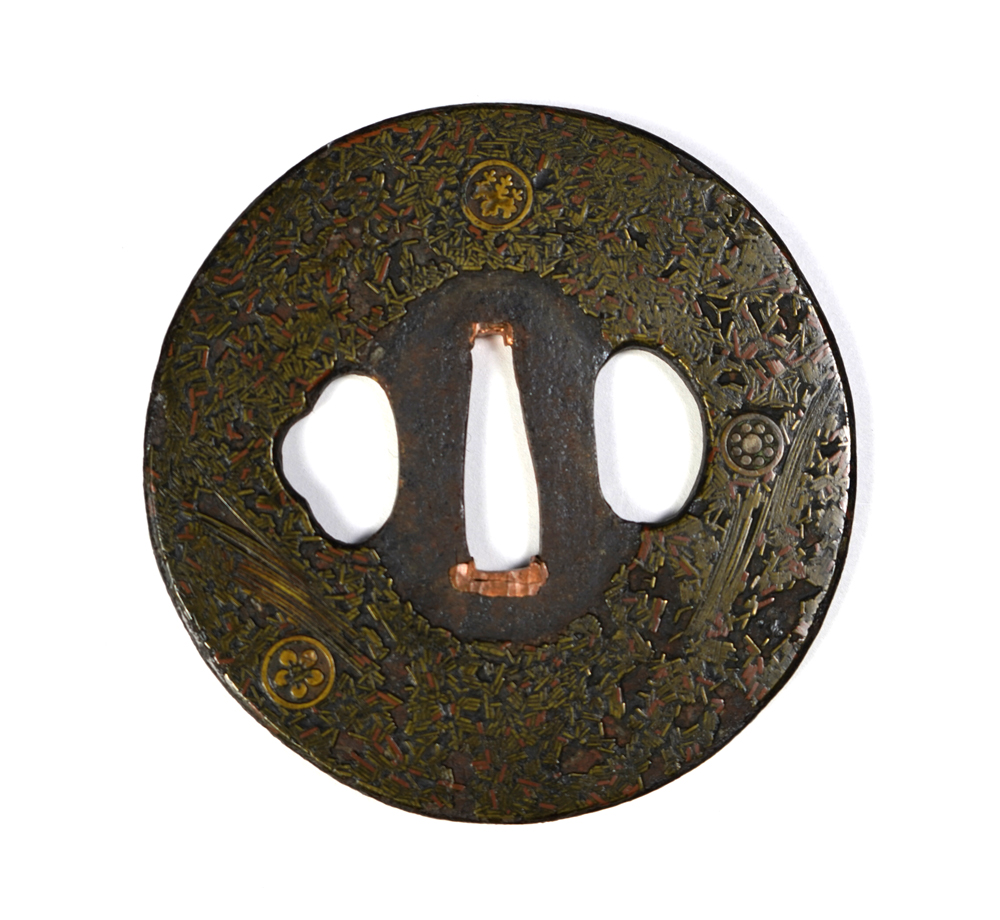
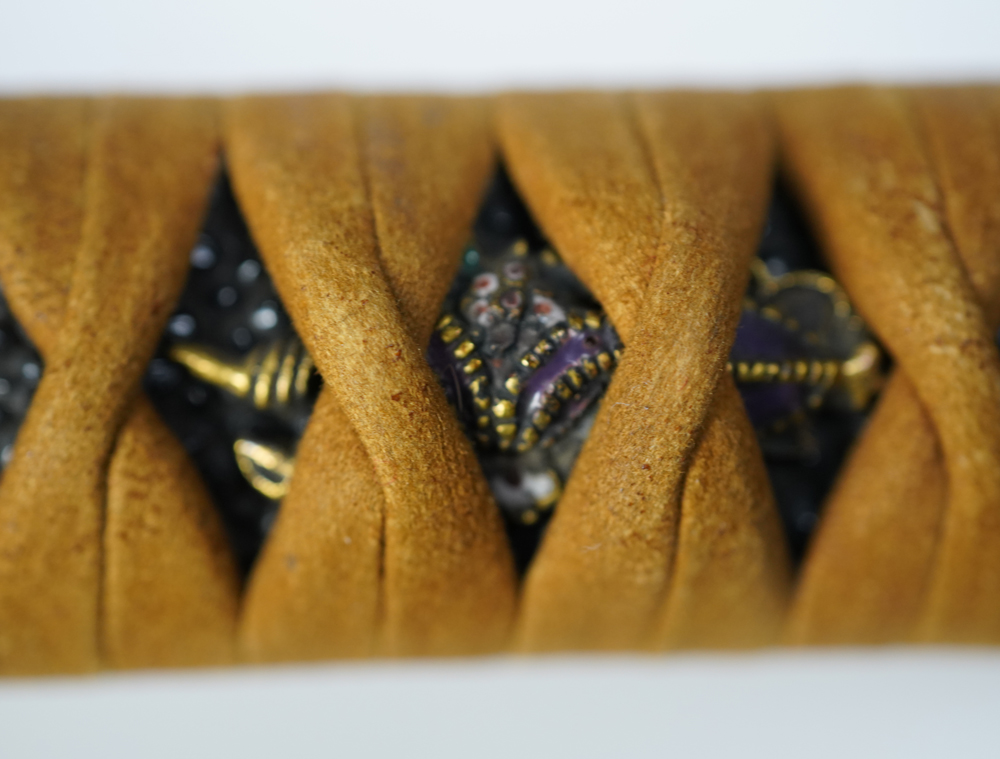
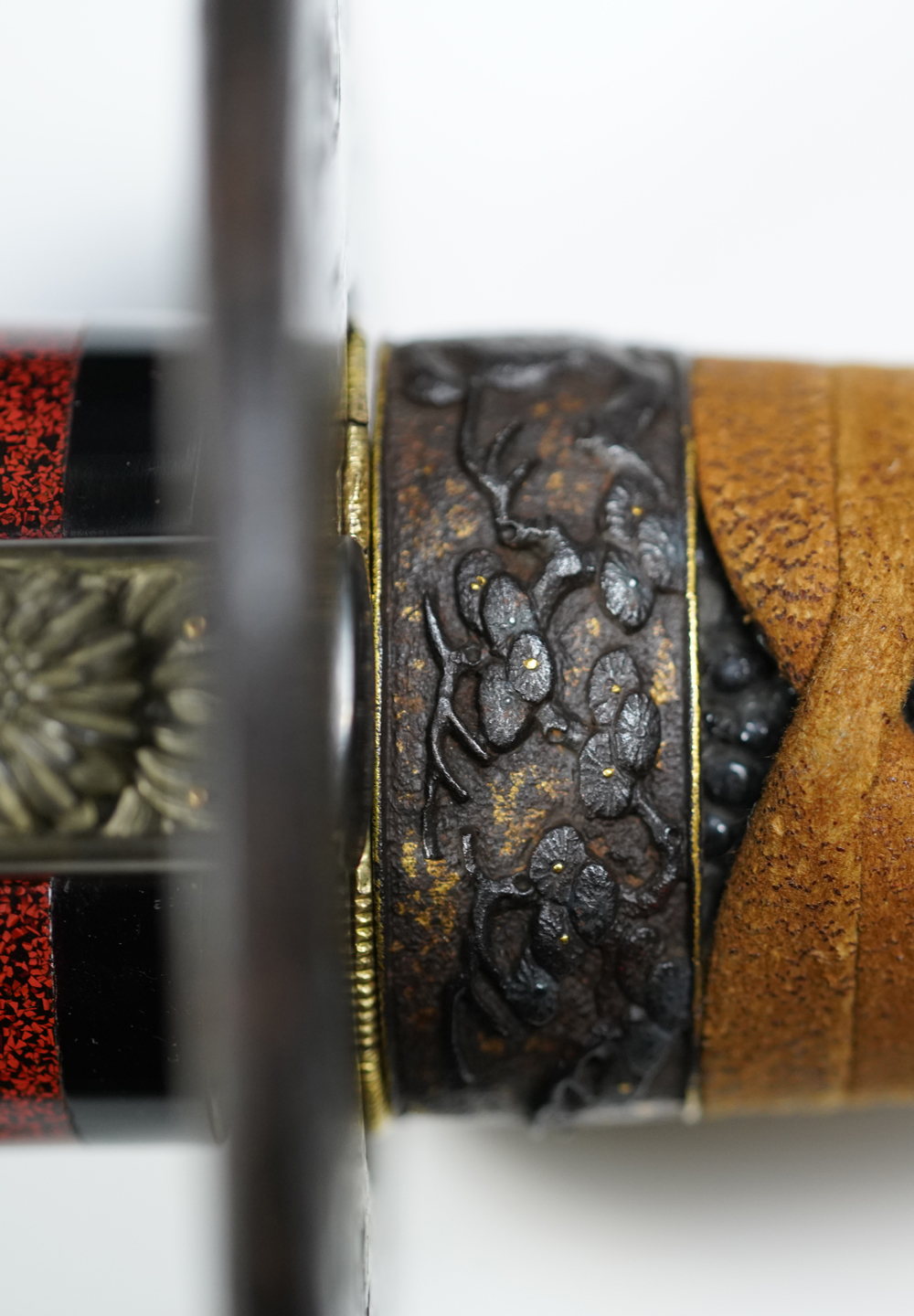
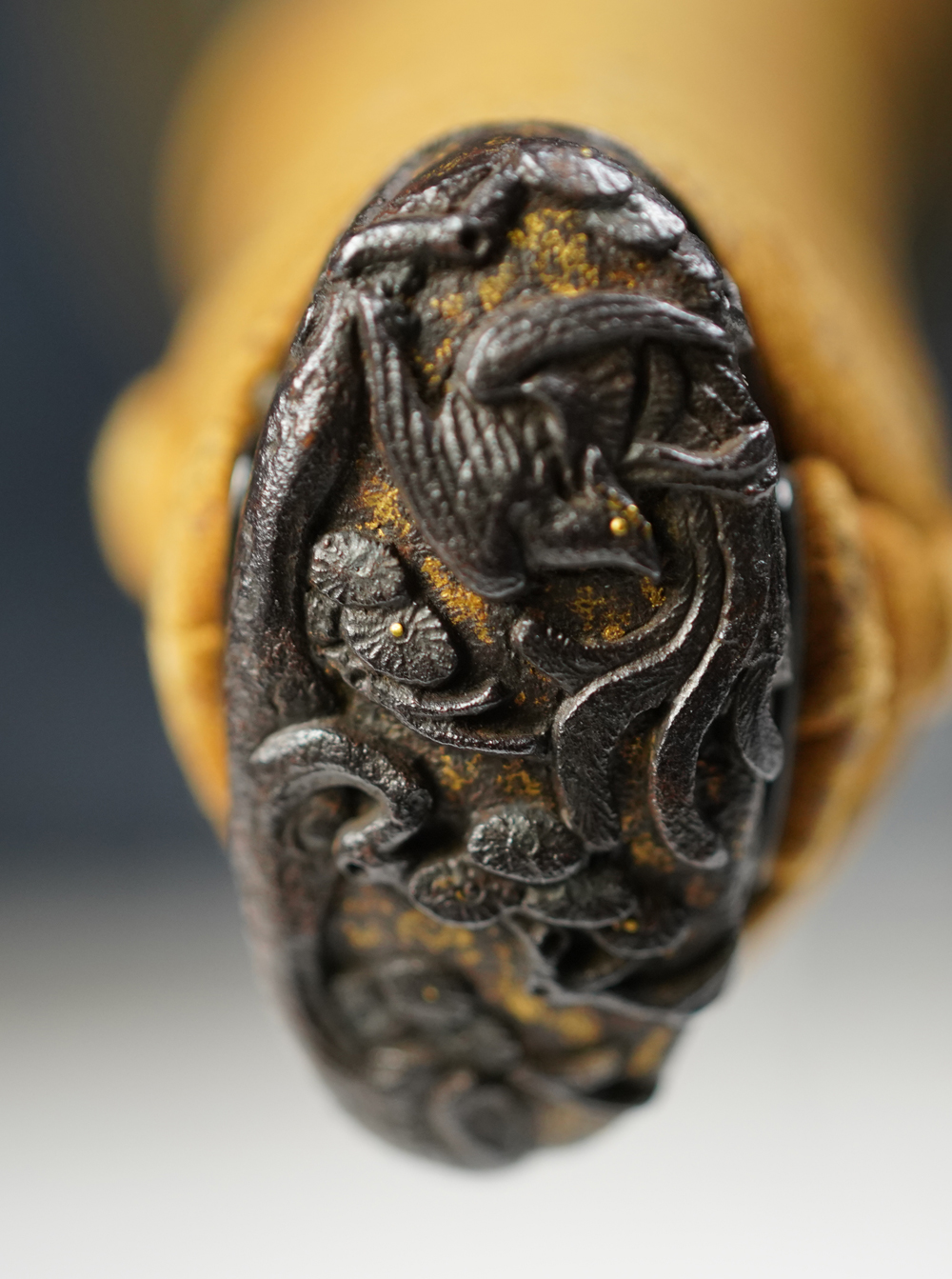
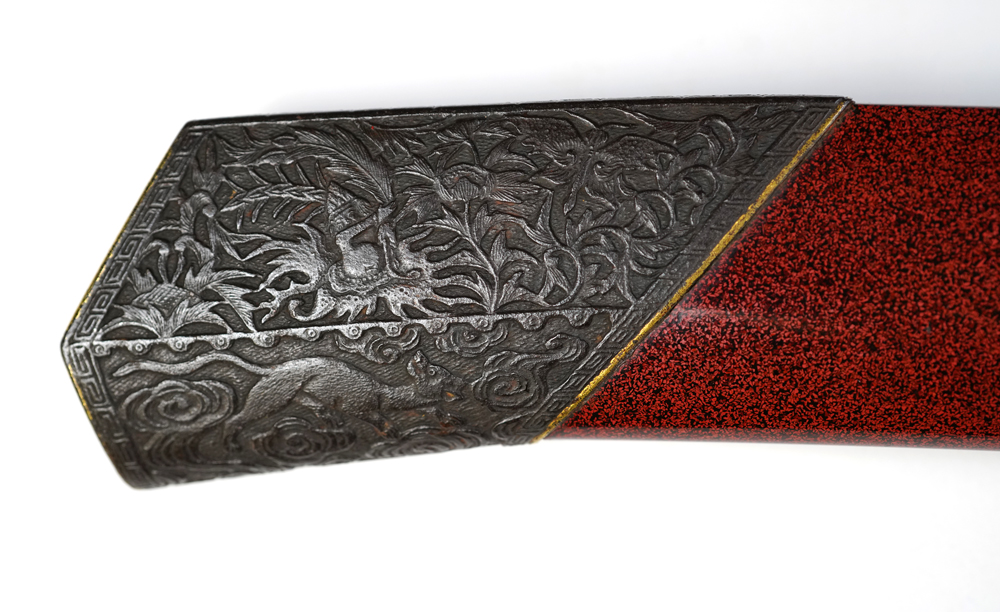
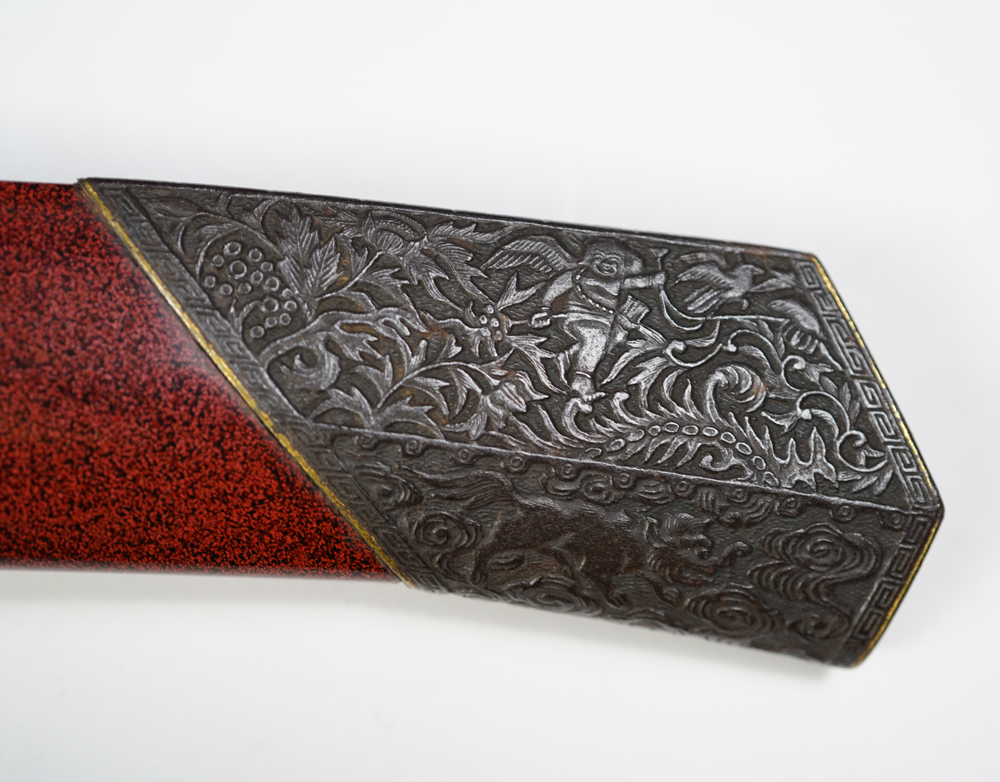


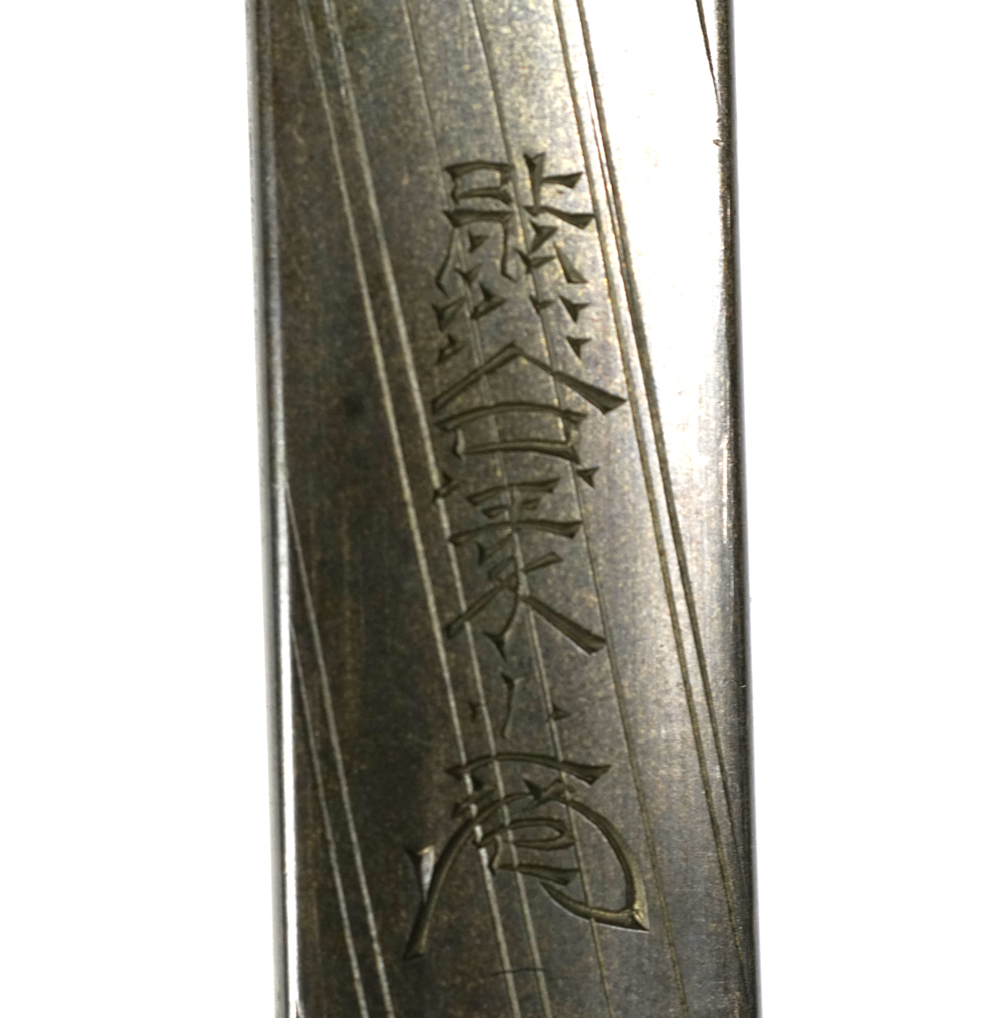



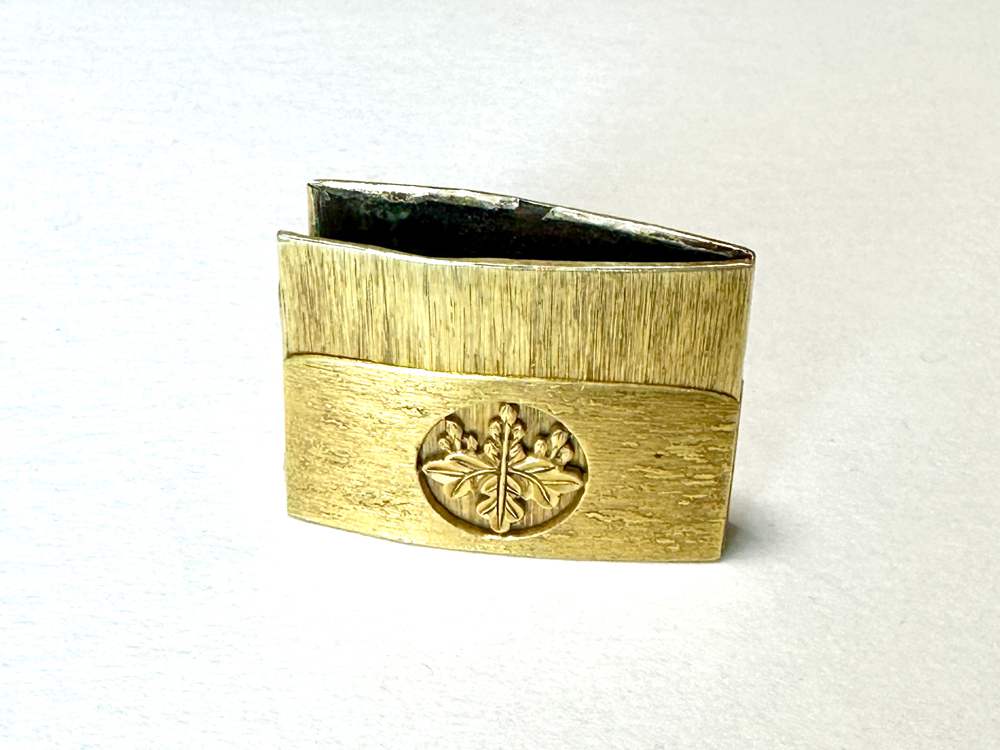
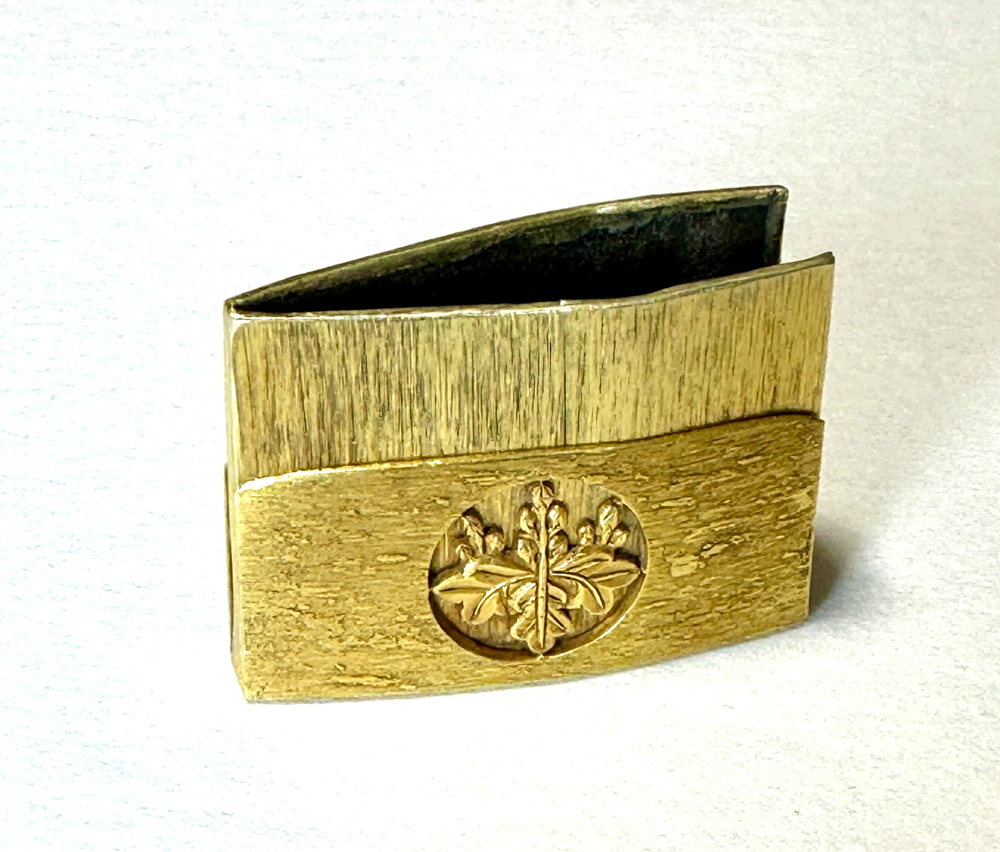
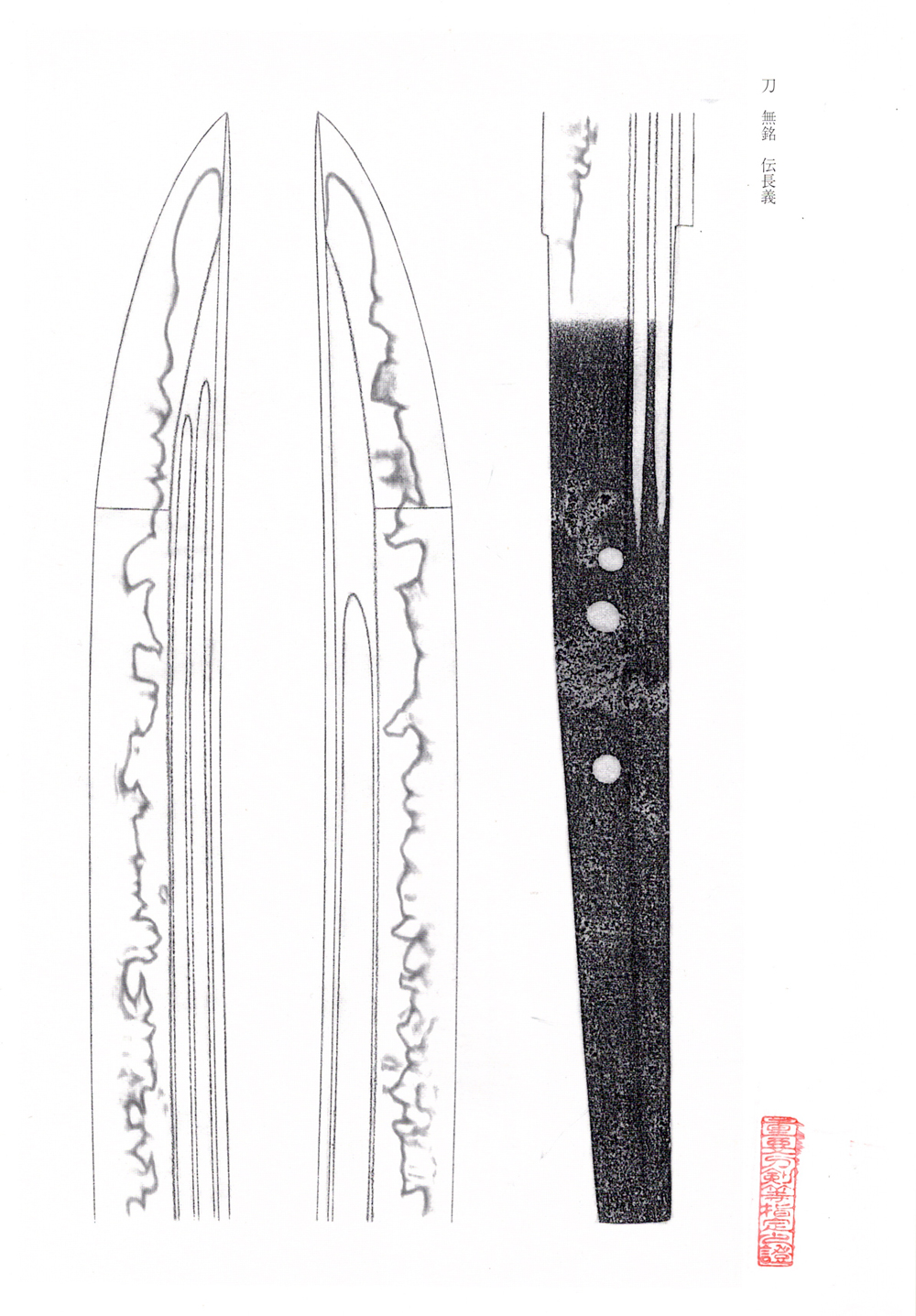
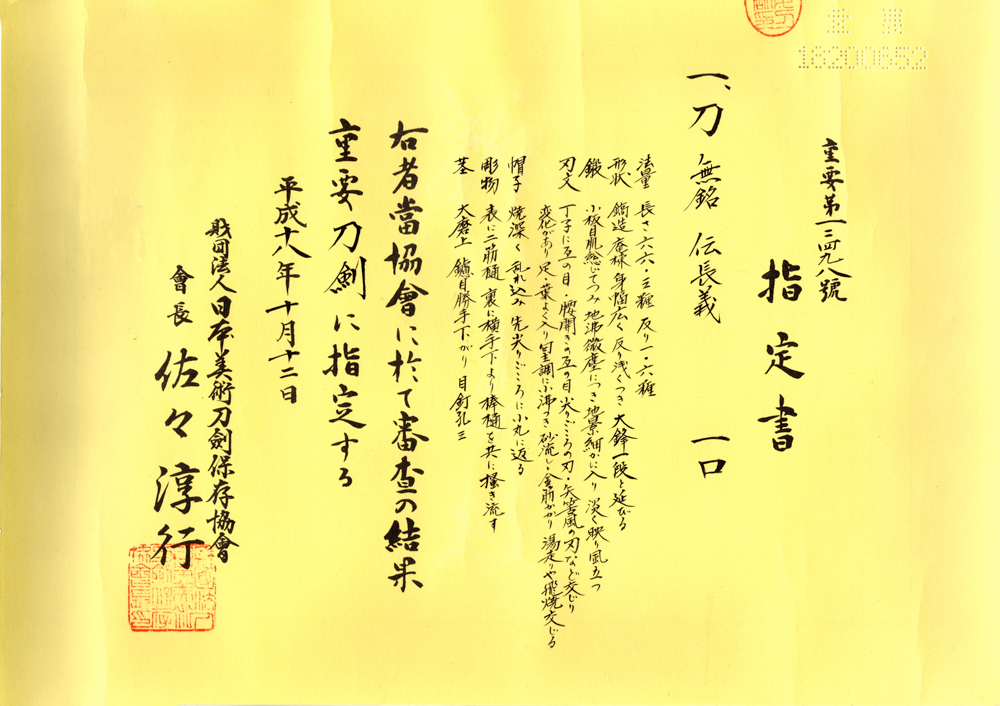
CONTACT
SEARCH
-
PERIOD LISTS
Koto|Shinto|Shinshinto|GendaitoPRICE LISTS
~¥500,000 JPY|¥510,000 JPY~¥1,000,000 JPY|¥1,010,000 JPY~¥2,000,000 JPY|¥2,010,000 JPY~¥3,000,000 JPY| ¥3,010,000 JPY~¥4,000,000 JPY|¥4,010,000 JPY~¥5,000,000 JPY|¥5,010,000 JPY~¥10,000,000 JPY|¥10,010,000 JPY~ |Please contact us -
PAPER LISTS
Important art appraisal|Others|No appraisalJpanese Swords
NBTHK Tokubetsu Jyuyo|NBTHK Jyuyo|NBTHK Tokubetsu Hozon|NBTHK HozonFittings
NBTHK Tokubetsu Jyuyo|NBTHK Jyuyo|NBTHK Tokubetsu Hozon|NBTHK Hozon


